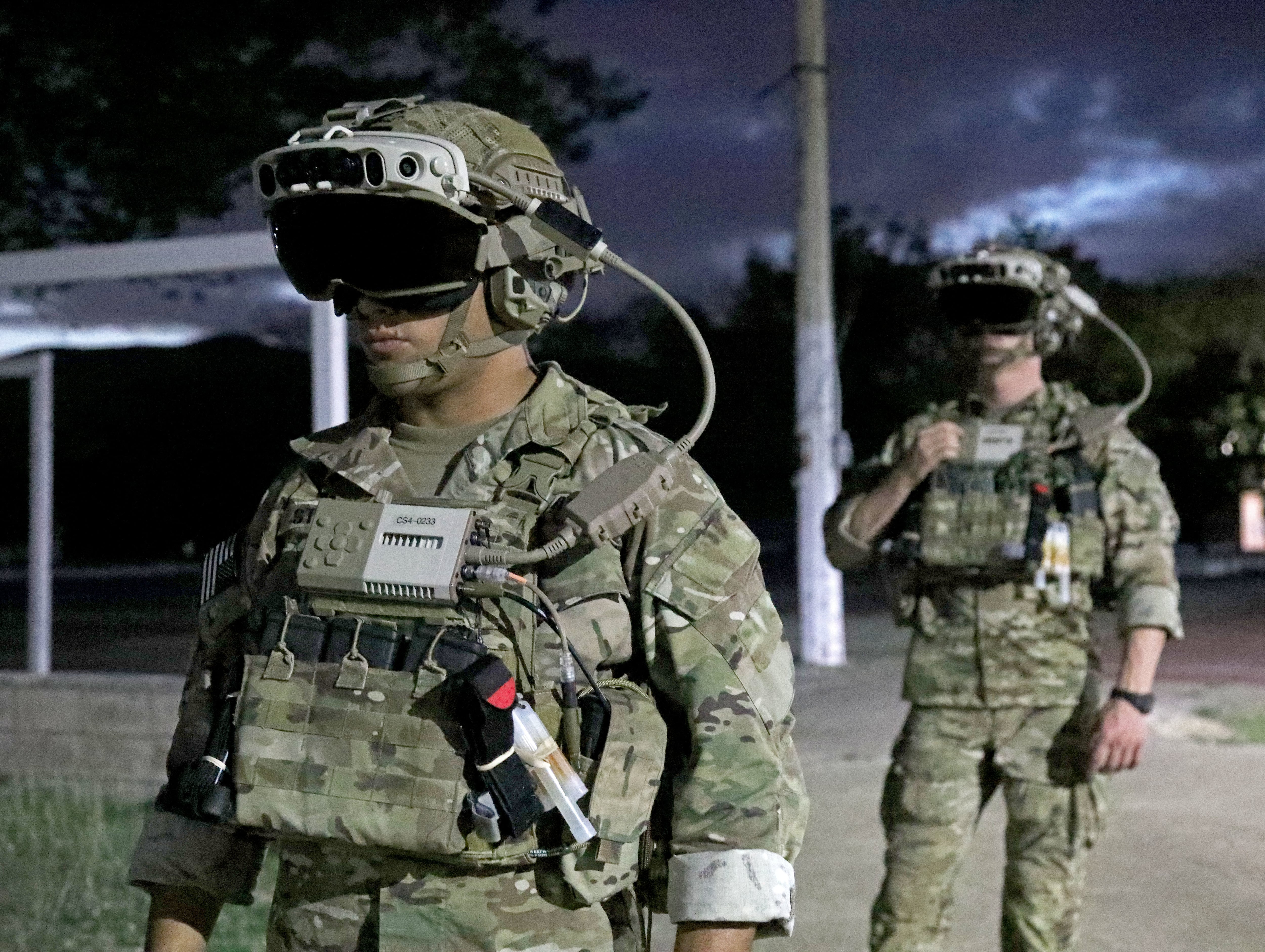Soldiers using an Army-specific version of Microsoft’s “mixed reality” goggles suffered from “mission-affecting physical impairments,” a report from the Defense Department’s testing office revealed.
The report, which was obtained by Bloomberg News, said soldiers complained of headaches, eyestrain and nausea, with 80% of those who experienced discomfort noting that their symptoms started after less than three hours of using the goggles.
Nickolas Guertin, director of DoD’s Operation Test and Evaluation, said in the report obtained by Bloomberg that those issues must be addressed, but he didn’t deem the device a failure. The Army should “prioritize improvements” before a wider fielding to reduce the “physical discomfort of users,” Guertin said, according to Bloomberg.
The report, which was not made public, was marked as “Controlled Unclassified Information.”
The exercise chronicled in the report was conducted in May and June, although service members have been testing the Integrated Visual Augmentation System, or IVAS, for the last few years. In 2020, Sergeant Major of the Army Michael Grinston reviewed the systems as soldiers tested out the goggles in drills, such as clearing rooms.
The appeal of the goggles, Army leaders shared at the time, is that they give low-level leaders the ability to easily run new soldiers through various battle drills, building up small unit skillsets.
The goggles are supposed to provide a “heads-up display” for ground troops, similar to those utilized by fighter pilots.
Guertin noted in the report’s summary that improvements are needed with the goggle’s low-light sensors, display clarity, field of vision and other essential functions, according to Bloomberg. Guertin also noted that the latest model of the goggles — a customized-version of Microsoft’s HoloLens — allowed for “enhanced navigation and coordination of unit movements.”
The Army has proposed spending upwards of $420 million on the program this fiscal year and estimated that it may spend around $22 billion on the goggles over the next decade, citing costs including spare parts and support services, Bloomberg reported.
But while Army budgets and estimates view these goggles in a positive light, the report shows that soldiers may not be as infatuated with the goggles as planners are.
The level at which soldiers accepted the goggles “remains low,” the report showed, and both soldiers and leaders don’t think the goggles “contribute to their ability to complete their mission.”
While Microsoft was not given a copy of the Pentagon’s test results, the technology company told Bloomberg in a statement that “our close collaboration with the Army has enabled us to quickly build” and adjust the goggles “to develop a transformational platform that will deliver enhanced soldier safety and effectiveness. We are moving forward with the production and delivery of the initial set.”
The Army’s assistant secretary for acquisition, Doug Bush, said the Army “is fully aware” of concerns from the testing office and adjusting the program’s schedule “to allow time to develop solutions to the issues identified,” Bloomberg reported.
Despite these results, however, Bush gave the Army the green light to begin accepting the initial 5,000 sets of goggles produced that had been put on hold.
Rachel is a Marine Corps veteran and a master's candidate at New York University's Business & Economic Reporting program.





